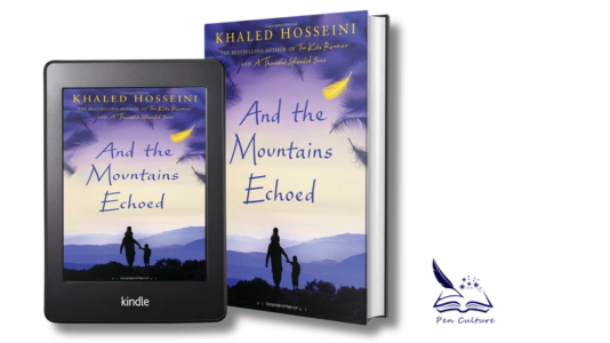And the Mountains Echoed by Khaled Hosseini was published in 2013. It marks his third novel. This follows the acclaimed The Kite Runner and A Thousand Splendid Suns. This novel expands Hosseini’s thematic focus on familial love, sacrifice, and the long-lasting effects of personal decisions. The book is set across multiple countries and decades. It intricately weaves together several stories. All the stories are connected by a single act of sacrifice—one that echoes through generations.
Plot Summary
The novel begins in 1952 Afghanistan. Saboor, a struggling farmer, is forced to sell his daughter, Pari, to a wealthy couple in Kabul. This heartbreaking decision sets the tone for the rest of the novel. It explores how Pari’s separation from her brother Abdullah affects their family. It also shows its impact on future generations. Throughout the story, readers are introduced to an array of interconnected characters. These include Saboor’s brother-in-law Nabi, Pari’s adoptive mother Nila, and others. Their lives are tied to the central theme of family separation.
The novel alternates between various characters and time periods, offering readers glimpses into the far-reaching consequences of a single moment. Hosseini moves from Afghanistan to other parts of the world. He explores how love, guilt, and memory shape the lives of his characters.
Characters and Themes
Hosseini excels in creating complex, deeply human characters. Abdullah’s deep love for his sister drives the emotional core of the novel. Pari’s struggles with her past also contribute to it. Nabi feels guilt for his role in her separation. Other characters, like the troubled poet Nila, add further layers of complexity. Themes of familial love, sacrifice, identity, and the long-lasting effects of personal decisions resonate throughout the novel.
Hosseini also addresses the themes of exile, displacement, and heritage. Characters often grapple with the consequences of their actions. They also consider how those actions affect future generations. This makes the novel a study in inter-generational impact.
Writing Style and Appeal
Hosseini’s writing is vivid and emotionally charged, drawing readers into the beauty and tragedy of the world he depicts. His descriptions of Afghanistan are evocative, portraying both its natural beauty and the political unrest that has shaped its history. The novel’s non-linear structure, though fragmented, allows for multiple perspectives and voices, enriching the overall narrative.
This novel will appeal to fans of multi-generational family sagas. It will also attract those interested in human stories set against the backdrop of Afghan history and culture. Readers who enjoy introspective, character-driven narratives will find much to appreciate.
Strengths
- Emotional Depth: The novel’s strength lies in its portrayal of human emotions—love, guilt, sacrifice. This makes the characters relatable. Their struggles are palpable.
- Interconnected Stories: Hosseini masterfully links seemingly unrelated stories. He creates a layered narrative that explores the impact of one event on various lives.
- Exploration of Afghan Diaspora: The novel delves into how different characters grapple with their cultural heritage. They also deal with displacement. This adds richness to the story.
Weaknesses
- Disjointed Structure: The novel’s fragmented storytelling, which shifts between characters, locations, and timelines, may feel disorienting for some readers. This can make it difficult to follow the central plot. It may also detract from the emotional intensity that Hosseini achieved in his earlier works.
- Uneven Character Development: While some characters are fully fleshed out, others feel less developed. This leads to uneven engagement with certain storylines.
Conclusion
And the Mountains Echoed is a richly woven tale of familial bonds, sacrifice, and the long-lasting effects of personal decisions. Its structure may feel disjointed. Nevertheless, Hosseini’s deep character development and insightful exploration of love and loss make it a rewarding and heartfelt read. Once again, Hosseini demonstrates his ability to capture the complexity of human relationships. He offers a novel that resonates long after the final page.
Rating: 4/5




